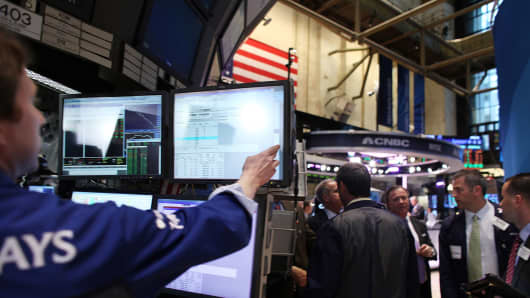While many traders usually dismiss the big, round numbers as having little meaning from a fundamental or technical standpoint, eclipsing this mark could be different. (Read More: Bears on the Brink: 'I Can't Fight It Anymore')
"It's psychological more than anything," said Justin Wiggs, vice president of trading at Stifel Nicolaus. "If we stay above 1,500 it could bring some incremental dollars off the sidelines."
The move past 1,500 comes as investors have been showing more confidence in stocks, finally taking some of the $2.7 trillion lying dormant in low-yielding money market funds and pumping it into equities. Stock-based mutual funds saw $9.3 billion of inflows last week and $23.6 billion over the past two weeks, according to the Investment Company Institute.
"To the degree that those are sticky investments and those dollars stay in equities, that will be a trend we'll be watching here in the first quarter," Wiggs said.
Market veteran Art Cashin, the floor operations manager for UBS, said the mark could be significant as the "bulls need a breakout punch like S&P through 1500."
The 1,500 billboard could become just a signpost along the way if current chart patterns hold up.
"We're already confirmed to go maybe not exactly to the all-time high but pretty darned close," said Abigail Doolittle, technical strategist at Seaport Group in New York. "Depending on how you calculate the targets for these inverse head-and-shoulders (patterns), we're already confirmed for 1,525 to 1,550."
The type of pattern Doolittle referenced involves a pair of price troughs, or bottoming points, with the second trough higher than the first and a breakout following.
That trading behavior has been significant within the context of the Federal Reserve's liquidity programs. The central bank has pumped nearly $3 trillion through its government debt-buying program known as quantitative easing, or QE.
Doolittle has issued bearish calls in the past and still believes the long-term picture of the stock market is troubling, but sees Federal Reserve liquidity driving the market now. Similar chart patterns have appeared during the first two rounds of QE and both were positive for the market - "rock stars," as she put it. (Read More: What Will It Take to Get the Fed to Stop Easing?)





